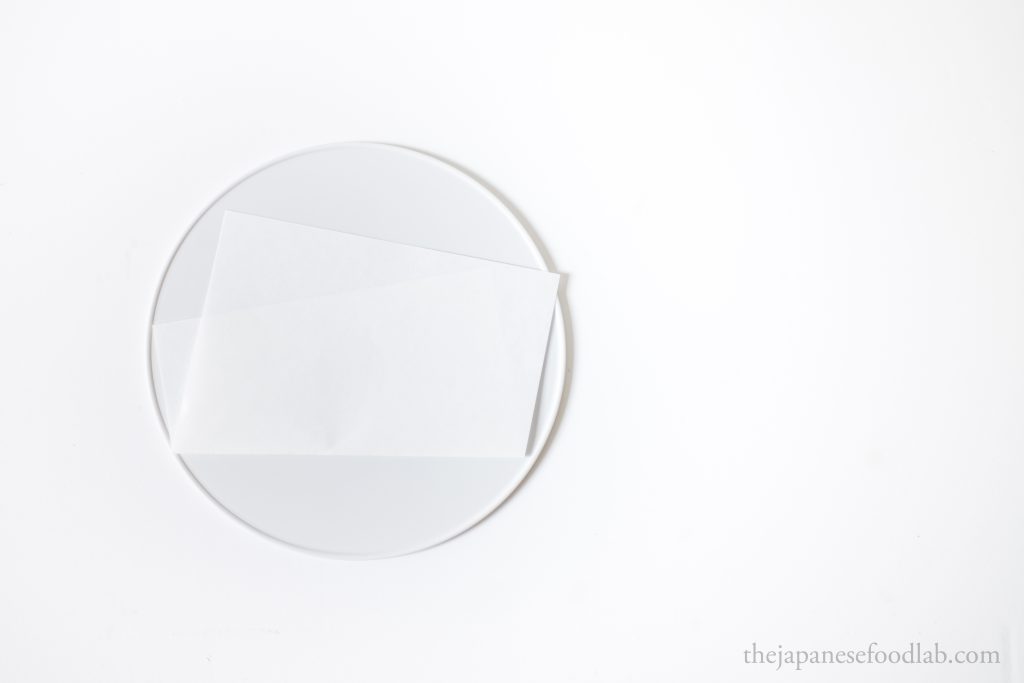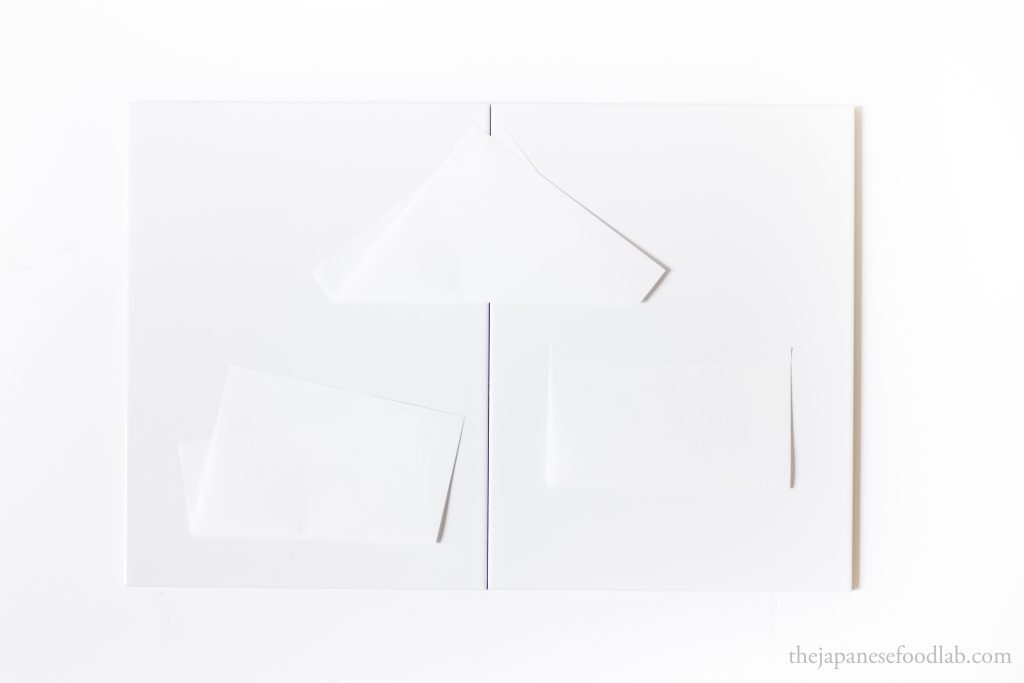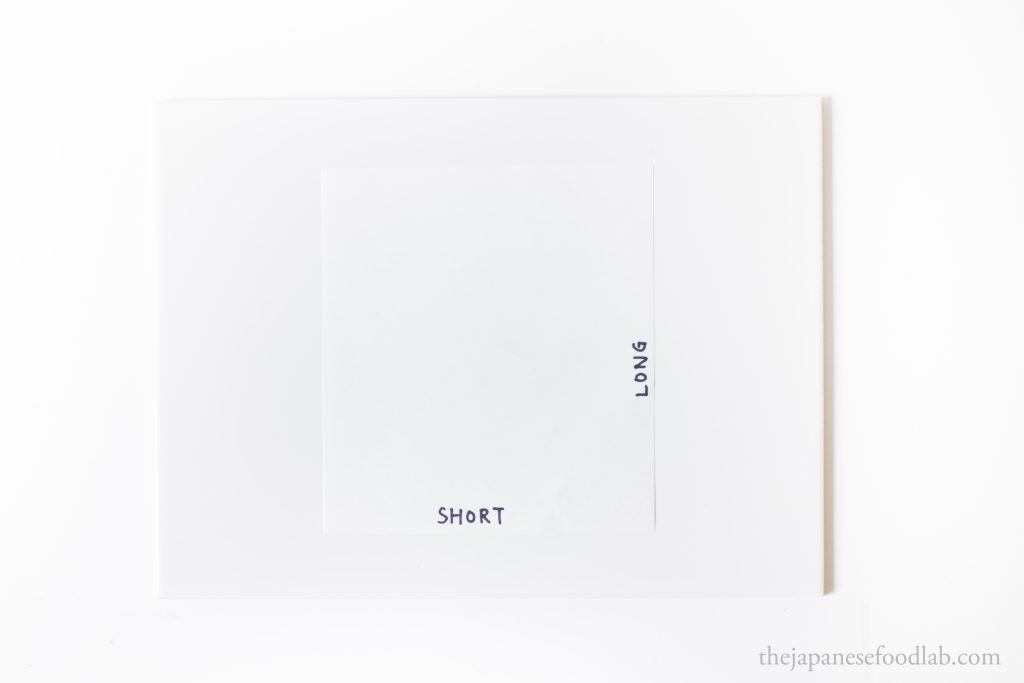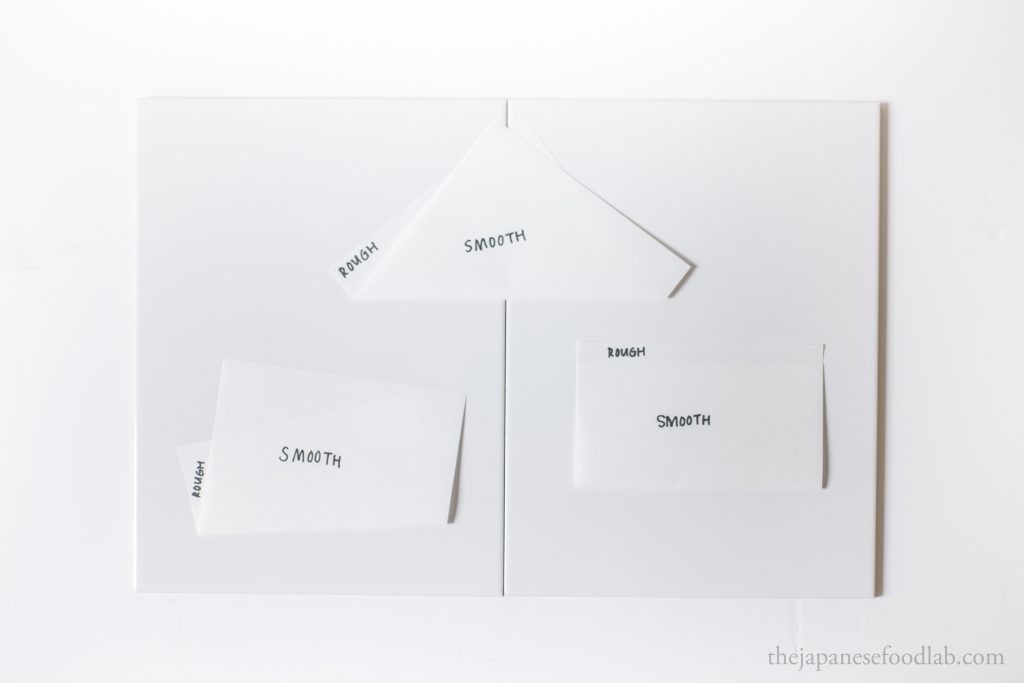This article is part of our series on tempura.

At specialty tempura establishments, freshly fried tempura is presented to you on neatly folded washi paper placed upon serving plates.
From a practical perspective, this paper serves to absorb excess oil left over from the frying process. It’s not uncommon to see chefs dab freshly fried tempura on trays lined with this paper, before transferring the piece over to you. Some chefs even pride themselves on frying the tempura so perfectly that no excess oil drips onto the washi paper after frying, and that your piece of washi paper remains spotless even after the entire multi course meal has ended.
From an artistic perspective, one might notice that the washi paper is actually folded in an asymmetric manner. This intentional deviation from perfect balance creates a sense of visual tension, disrupting the expected order and inviting diners to pause and contemplate the presentation of food. By introducing irregularity and unevenness, asymmetry challenges our preconceived notions of harmony and equilibrium.
There exists many different ways to fold tempura paper. Below, we share with you three of the more conventional ways.

Tempura paper is usually sold as rectangular sheets of various sizes, though it is sometimes possible to buy square ones. If using rectangular sheets, the long side should be on the left and right, and the short sides on the top and bottom.

Furthermore, tempura paper has a smooth side and rough side and should be folded so that the smooth side is facing upwards. Placing oily food on the rough side of the tempura paper may cause some paper pulp to stick to the food and should be avoided. The diagrams below are labeled accordingly to make them easy to follow.

Care should also be taken to ensure the papers are folded in the correct orientation. The papers folded for tempura symbolize auspicious or congratulatory occasions (慶), . However, if folded in the reverse, they are instead used for religious ceremonies associated with death and condolences (弔).